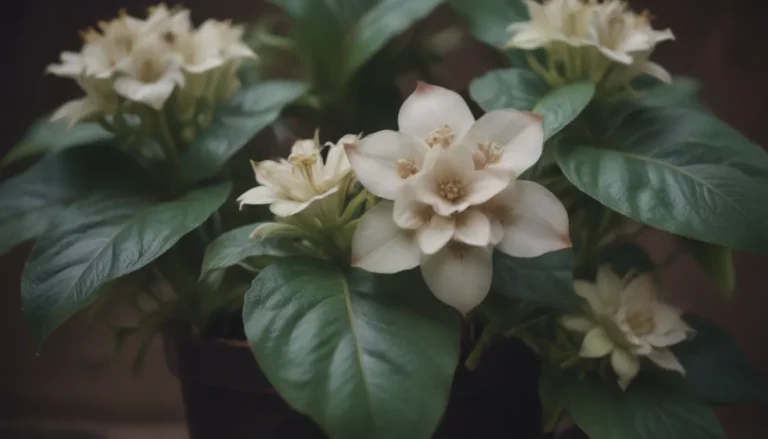Ultimate Guide to Growing and Caring for African Milk Tree

Are you looking to add a unique and interesting plant to your collection? The African milk tree, also known as Euphorbia trigona, is a fascinating succulent that can bring a touch of Central Africa to your home or garden. In this in-depth guide, we’ll explore everything you need to know about growing and caring for this striking plant. From light and soil requirements to propagation and common problems, we’ve got you covered.
Getting to Know the African Milk Tree
Before we dive into care tips, let’s take a closer look at the African milk tree and its unique characteristics. This plant, often mistaken for a cactus due to its appearance, features triangular stems with ridges and thorns. Its teardrop-shaped leaves give it a distinctive look that sets it apart from typical succulents. The African milk tree is a vigorous grower, reaching heights of up to 9 feet in ideal conditions. It is commonly grown as a hedge due to its rapid growth rate.
Native Habitat
The African milk tree is native to Central Africa, where it thrives in dry, arid climates. Its resilience and ability to withstand drought make it an excellent choice for xeriscaping projects.
African Milk Tree Care Tips
Now that you’re familiar with the African milk tree’s unique characteristics, let’s explore the key care requirements for this plant. Whether you’re a seasoned plant parent or a novice looking to expand your collection, these tips will help you keep your African milk tree healthy and thriving.
Light
African milk trees thrive in bright, indirect sunlight. A southern-facing window is ideal for indoor plants, while outdoor plants should be placed in a spot that receives partial sun. Avoid exposing the plant to hot, direct sunlight for extended periods, as this can lead to sunburn.
Soil
While the African milk tree isn’t picky about soil, good drainage is essential for its overall health. Amend heavy clay soil to improve drainage, or opt for sandy or sandy loam soil that facilitates water movement. Aim for a soil pH of 6.1 to 7.8 for optimal growth.
Water
This plant is drought-tolerant and requires minimal watering. Indoor plants should be watered moderately once a week, allowing the soil to dry out between waterings. Only supplement water during periods of prolonged drought, as the plant can withstand dry conditions.
Temperature and Humidity
African milk trees prefer dry, arid climates with hot temperatures. If you’re growing the plant in a region with hot summers, place it in a spot with indirect sunlight to prevent overheating. Avoid high humidity, as this can lead to issues with plant health.
Fertilizer
During the growing season (spring and summer), feed your African milk tree with a diluted water-soluble fertilizer once a month. Avoid fertilizing during the plant’s dormancy period in the fall and winter to promote healthy growth.
Types of African Milk Tree
While there is only one species of African milk tree (Euphorbia trigona), the ‘Royal Red’ variety (Euphorbia trigona f.rubra) is a popular choice for its striking maroon or vibrant red leaves. This variety adds a pop of color to any collection.
Pruning and Propagation
As African milk trees grow tall and top-heavy, pruning may be necessary to maintain their shape and stability. When pruning, use gloves and a sharp, sterilized knife to remove stems. The plant can be propagated easily from cuttings, but take precautions due to its toxic sap.
Pruning Tips:
- Always wear gloves when handling the plant and use a sharp, sterilized knife for clean cuts.
- Maintain balance by pruning evenly on both sides to prevent leaning.
Propagation Method:
- Use proper protective gear when handling cuttings due to the plant’s toxic sap.
- Wash your hands immediately if you come into contact with the sap to prevent skin irritation.
Potting and Repotting
African milk trees thrive in porous clay pots that promote drainage. Use a sandy soil or succulent potting mix with added perlite or pumice for optimal growth. Repot the plant every 1-2 years to accommodate its growth and ensure root stability.
Potting Tips:
- Choose a pot with ample drainage holes to prevent waterlogging.
- Repot the plant annually or when it outgrows its current container.
Overwintering Tips
African milk trees are sensitive to cold temperatures and should be brought indoors when temperatures drop below 50 degrees F. Place the plant in a well-ventilated room with indirect sunlight to prevent issues related to humidity and cold stress.
Overwintering Guidelines:
- Bring potted plants indoors when temperatures drop to protect them from cold damage.
- Provide good air circulation and indirect sunlight for optimal overwintering conditions.
Common Pests and Diseases
While African milk trees are generally resilient to pests and diseases, occasional issues may arise. Keep an eye out for mealybugs, which can be removed using a mild soapy solution or rubbing alcohol. Overwatering can lead to fungal problems like cork disease, so monitor watering habits to prevent issues.
Pest and Disease Management:
- Treat mealybugs promptly to prevent damage to the plant.
- Monitor watering to prevent fungal issues caused by overwatering.
Common Problems and Solutions
Yellowing leaves are a common issue with African milk trees and are typically caused by overwatering, underwatering, or cold temperatures. Preventing these problems is key to maintaining a healthy plant, so adjust care routines as needed to ensure optimal growth.
Troubleshooting Tips:
- Adjust watering habits to prevent yellowing leaves.
- Monitor temperature and light exposure to maintain plant health.
In conclusion, the African milk tree is a unique and striking plant that can thrive in a variety of conditions with proper care. By following these tips and guidelines, you can enjoy the beauty of this succulent in your home or garden for years to come. Remember to handle the plant with care due to its toxic sap, and enjoy watching it grow and flourish under your expert care. Happy gardening!




